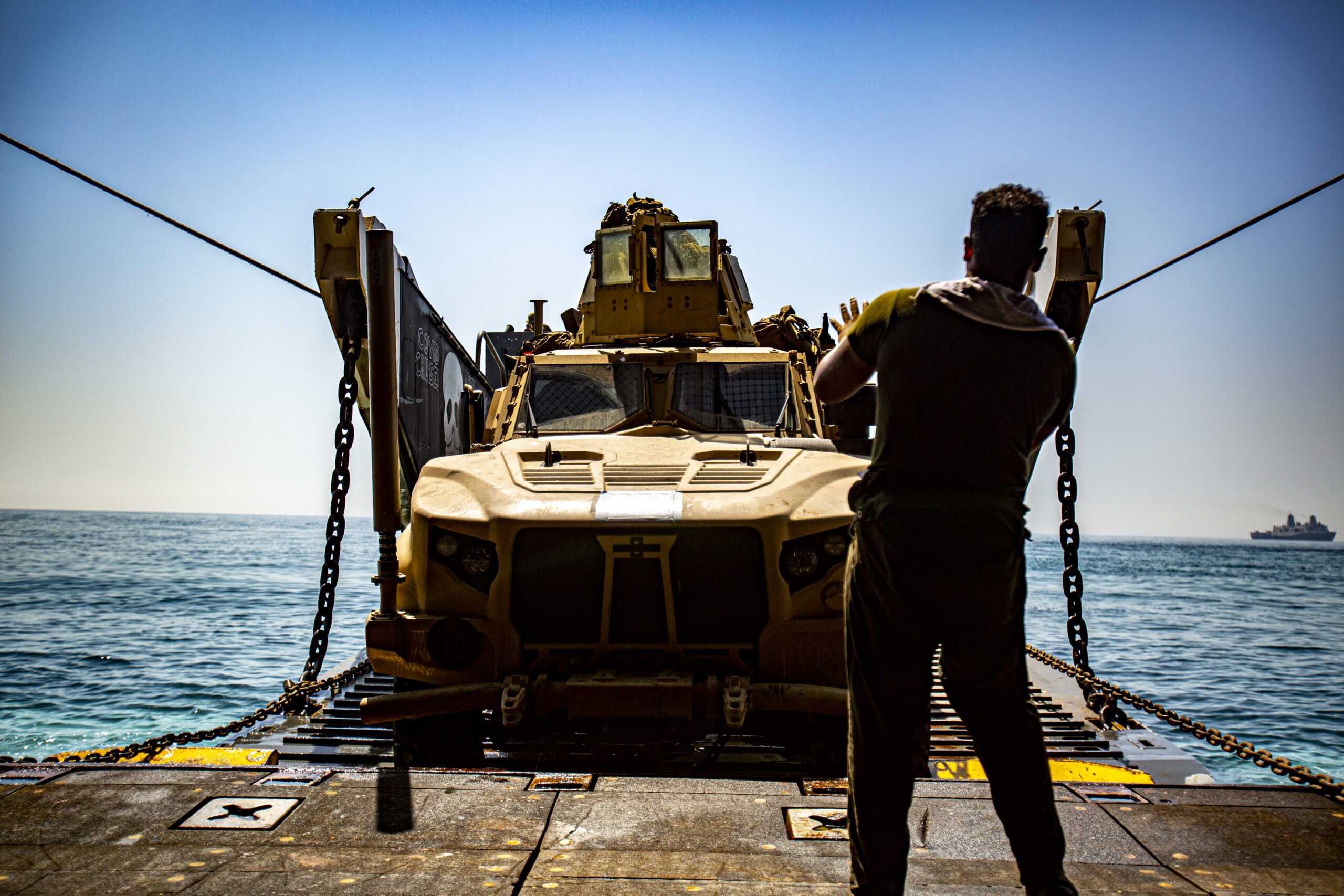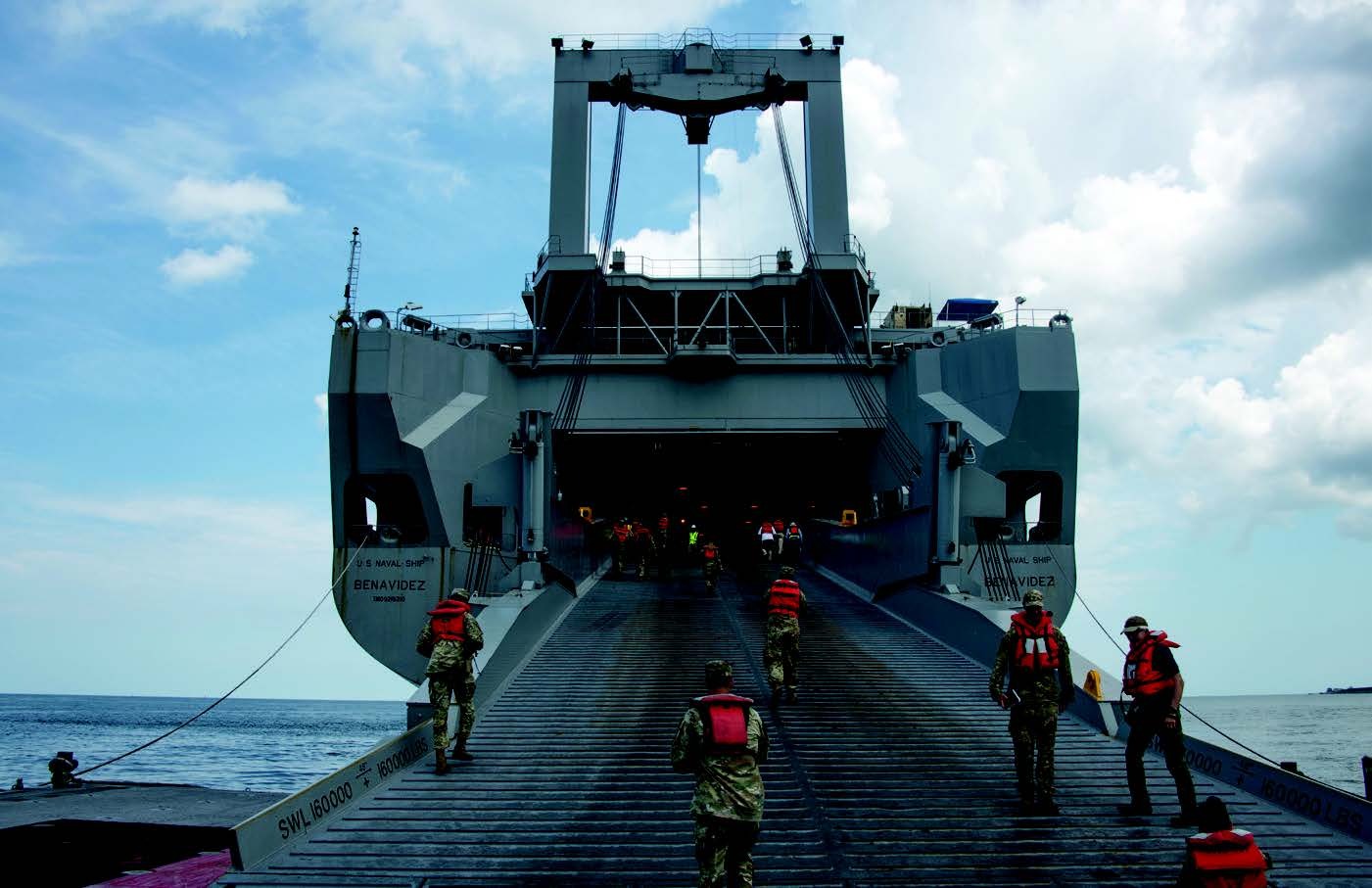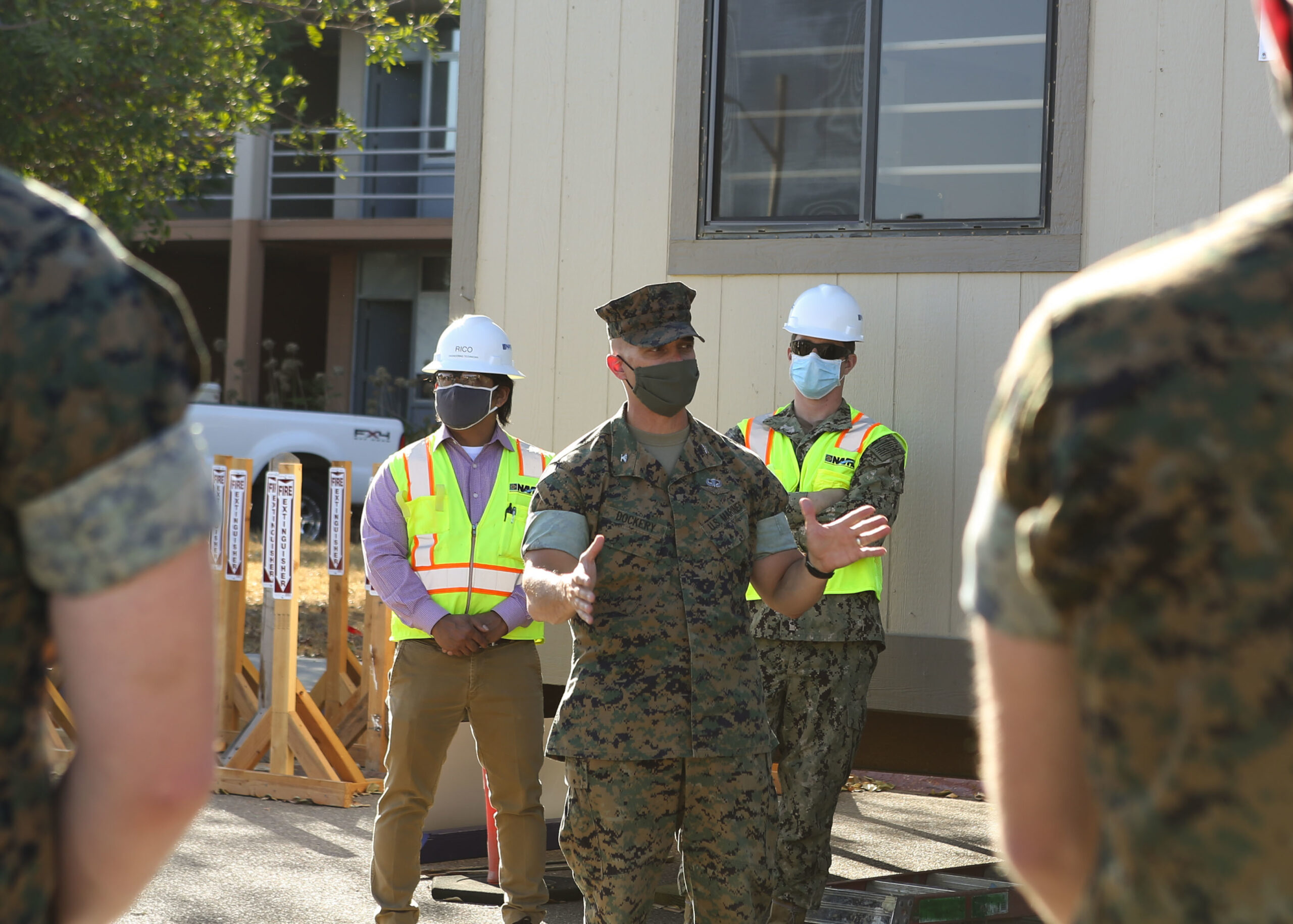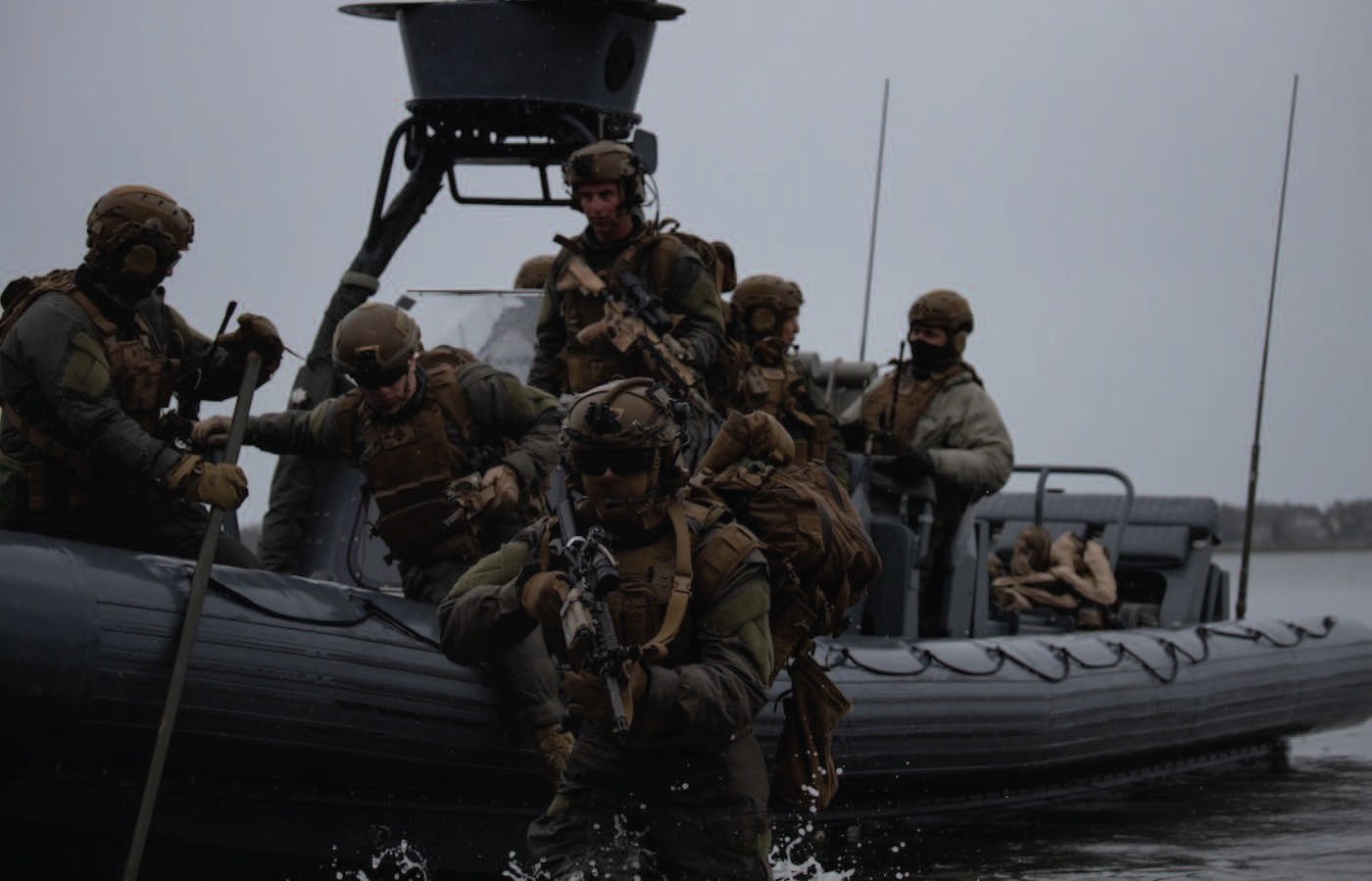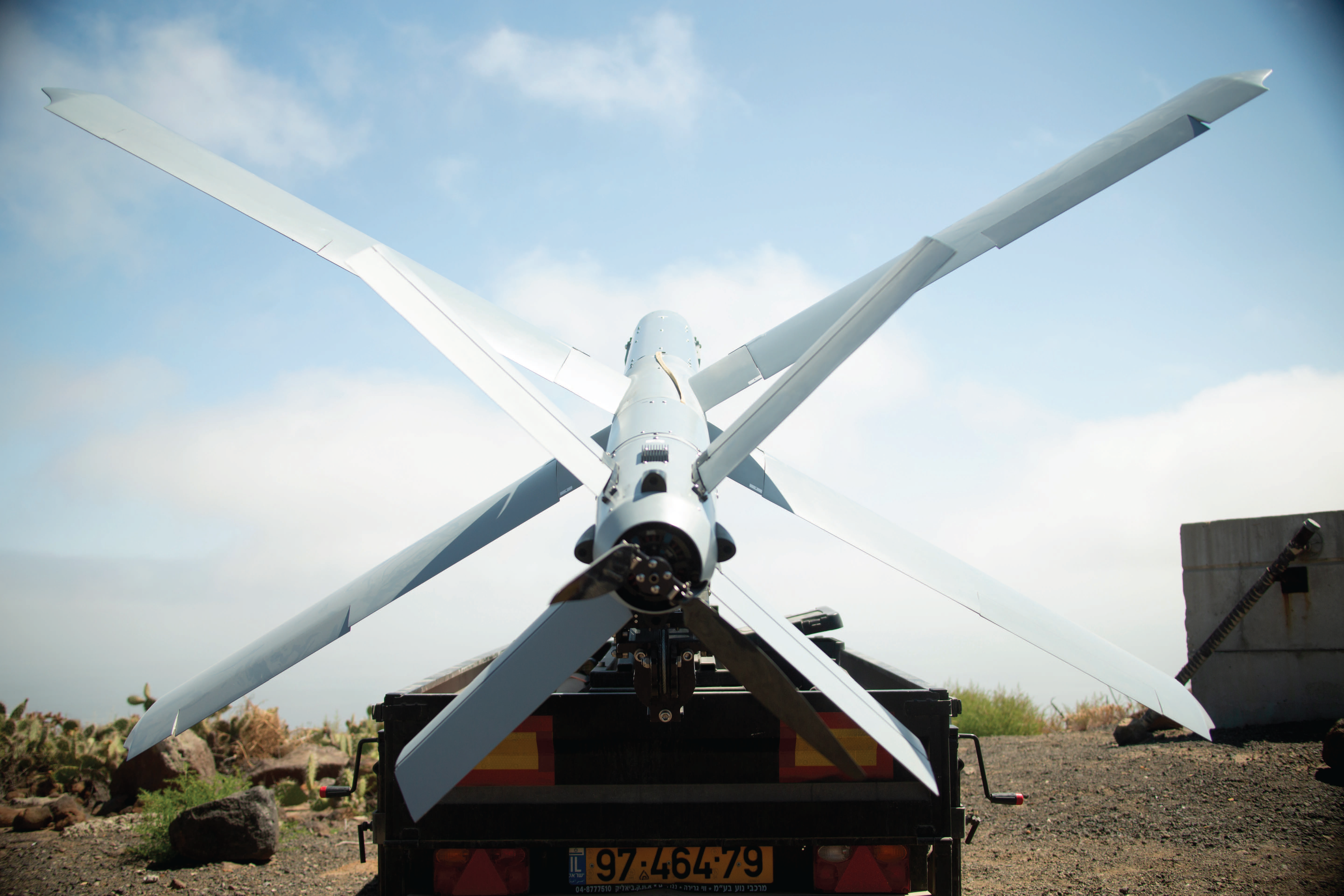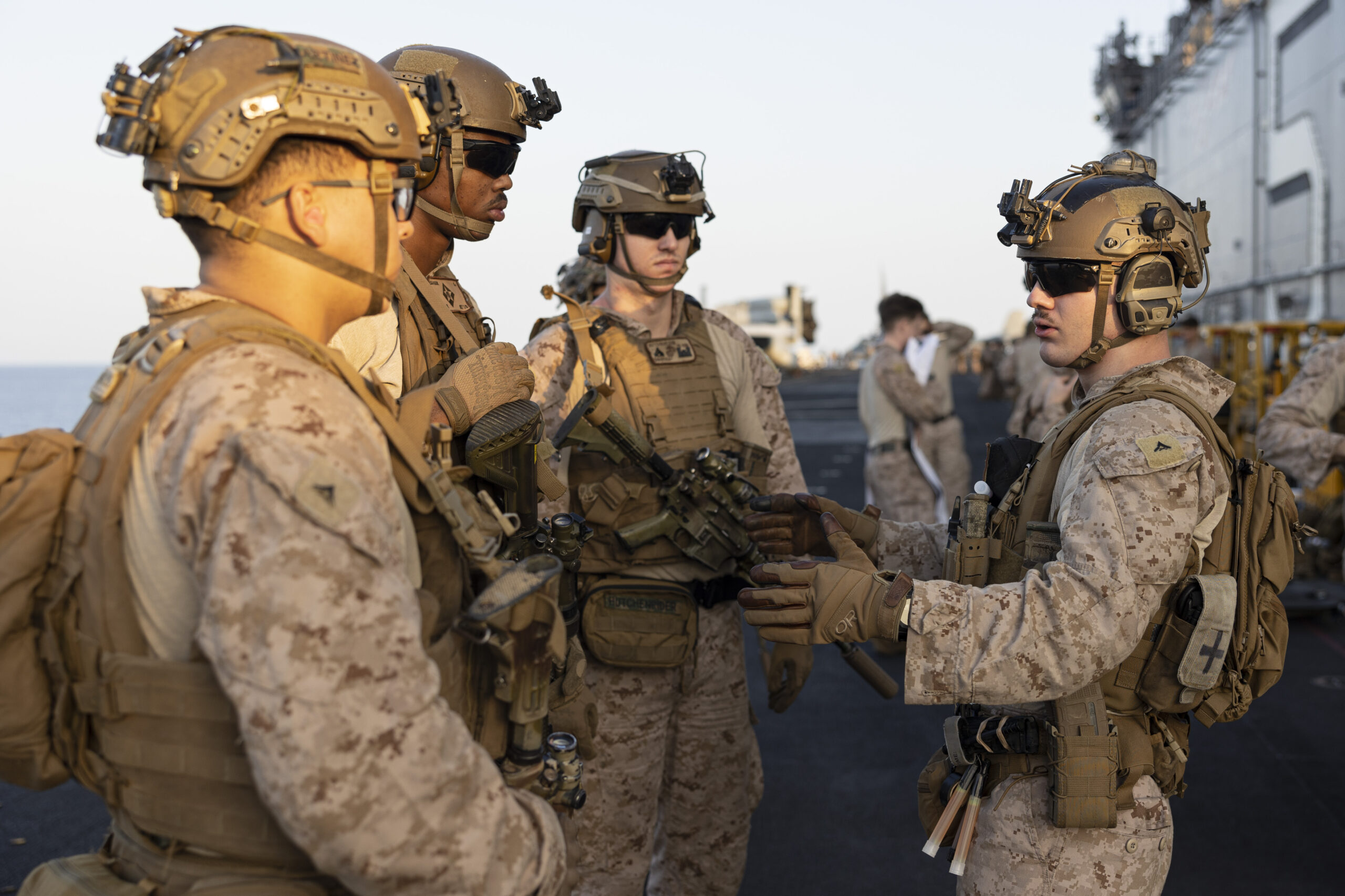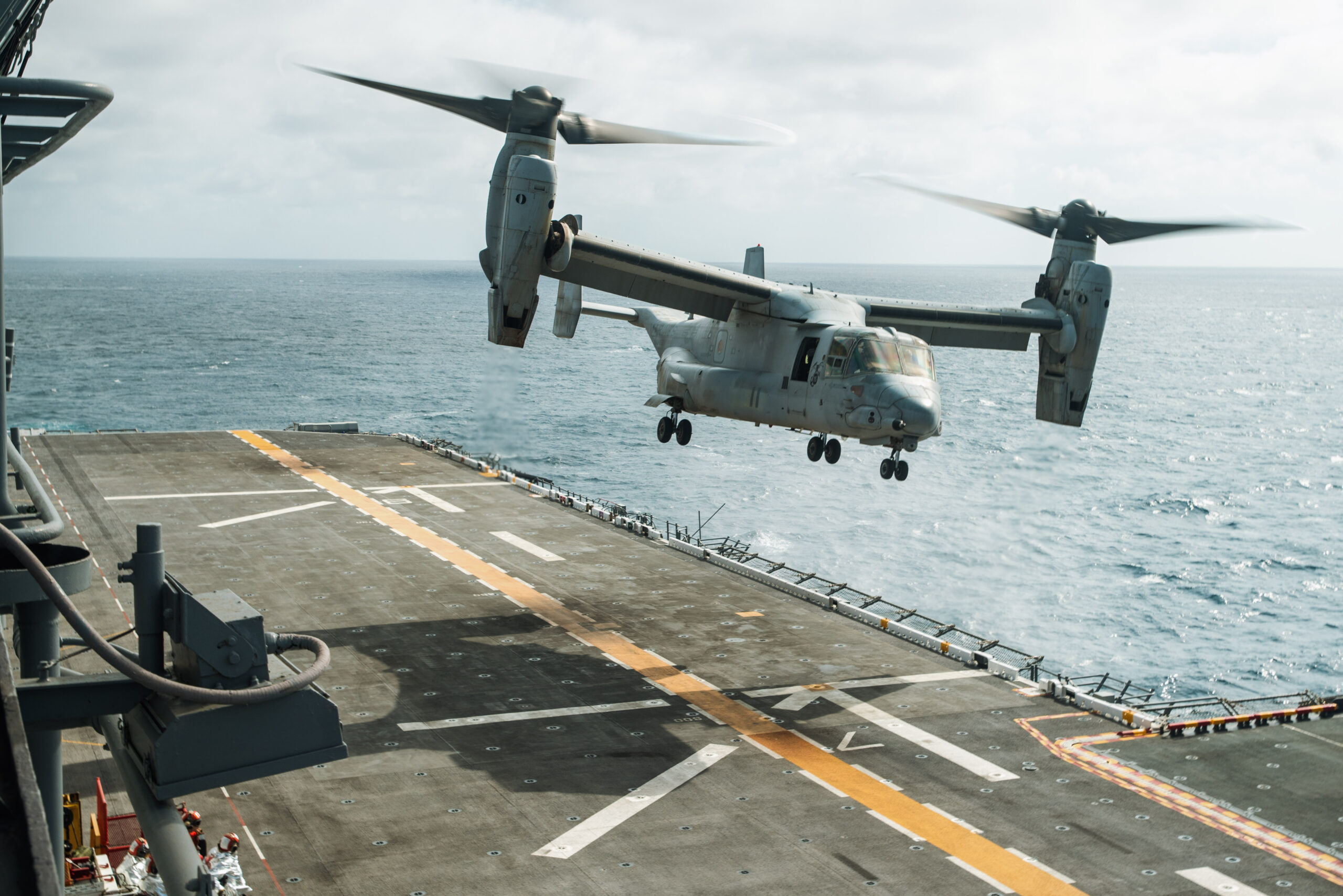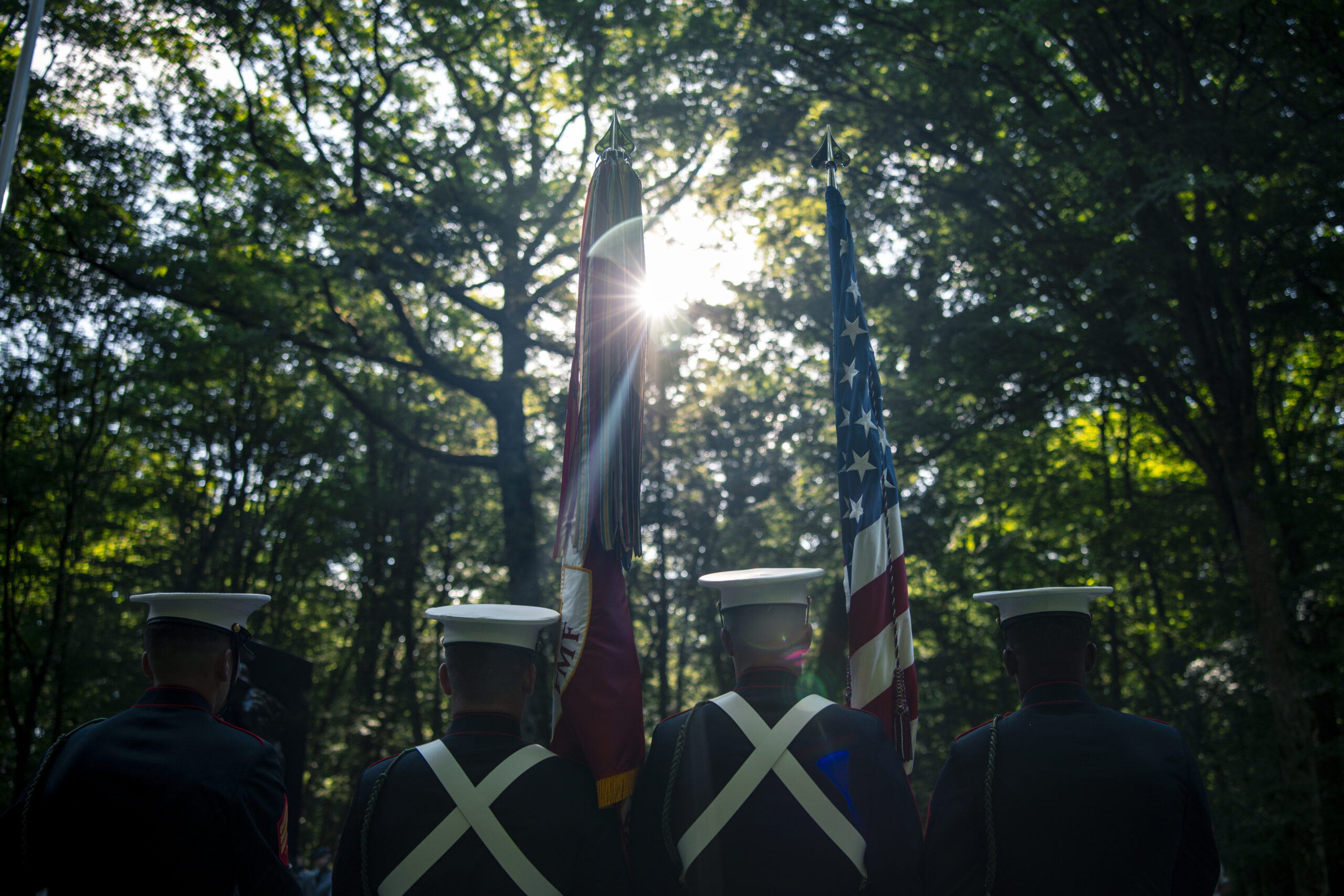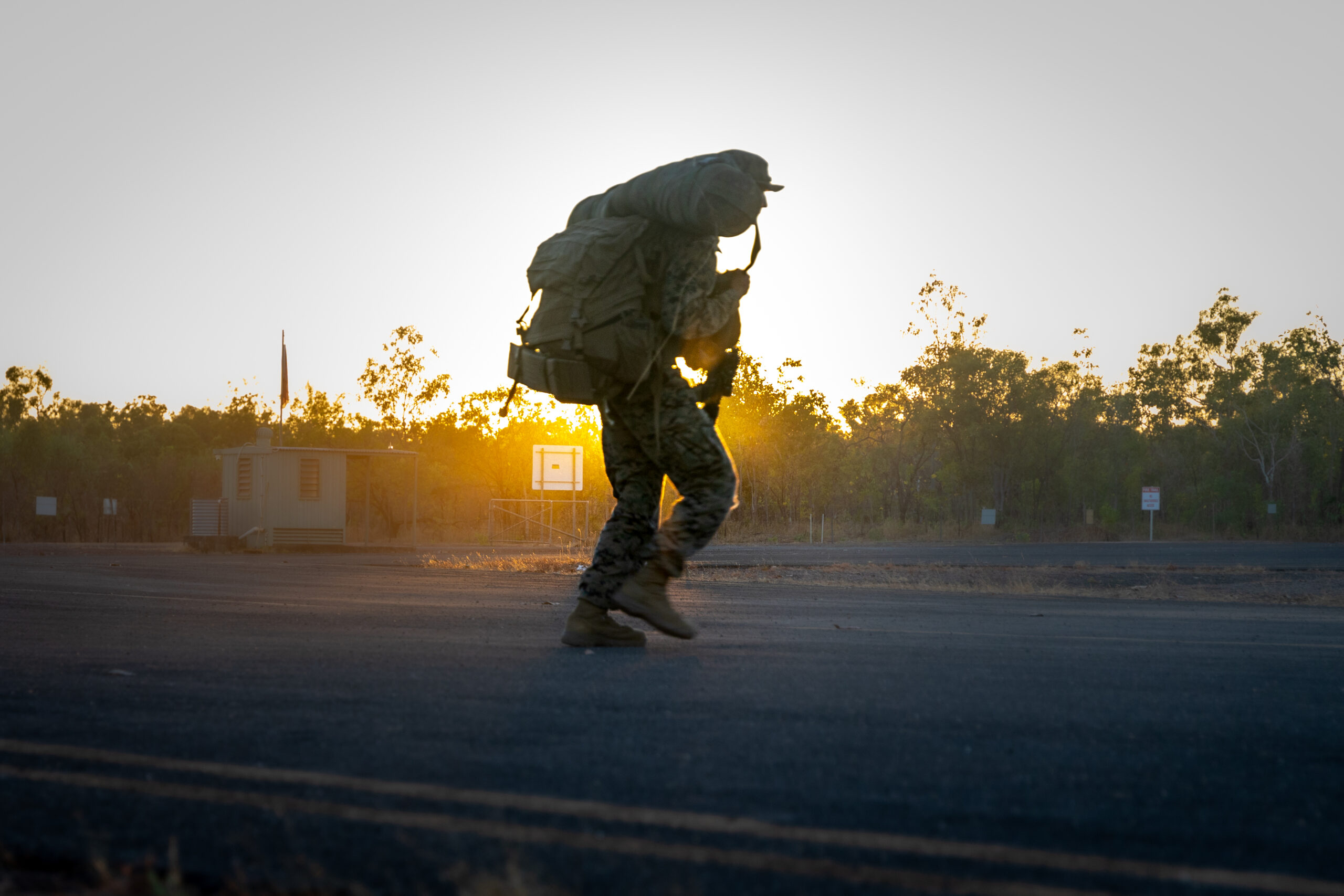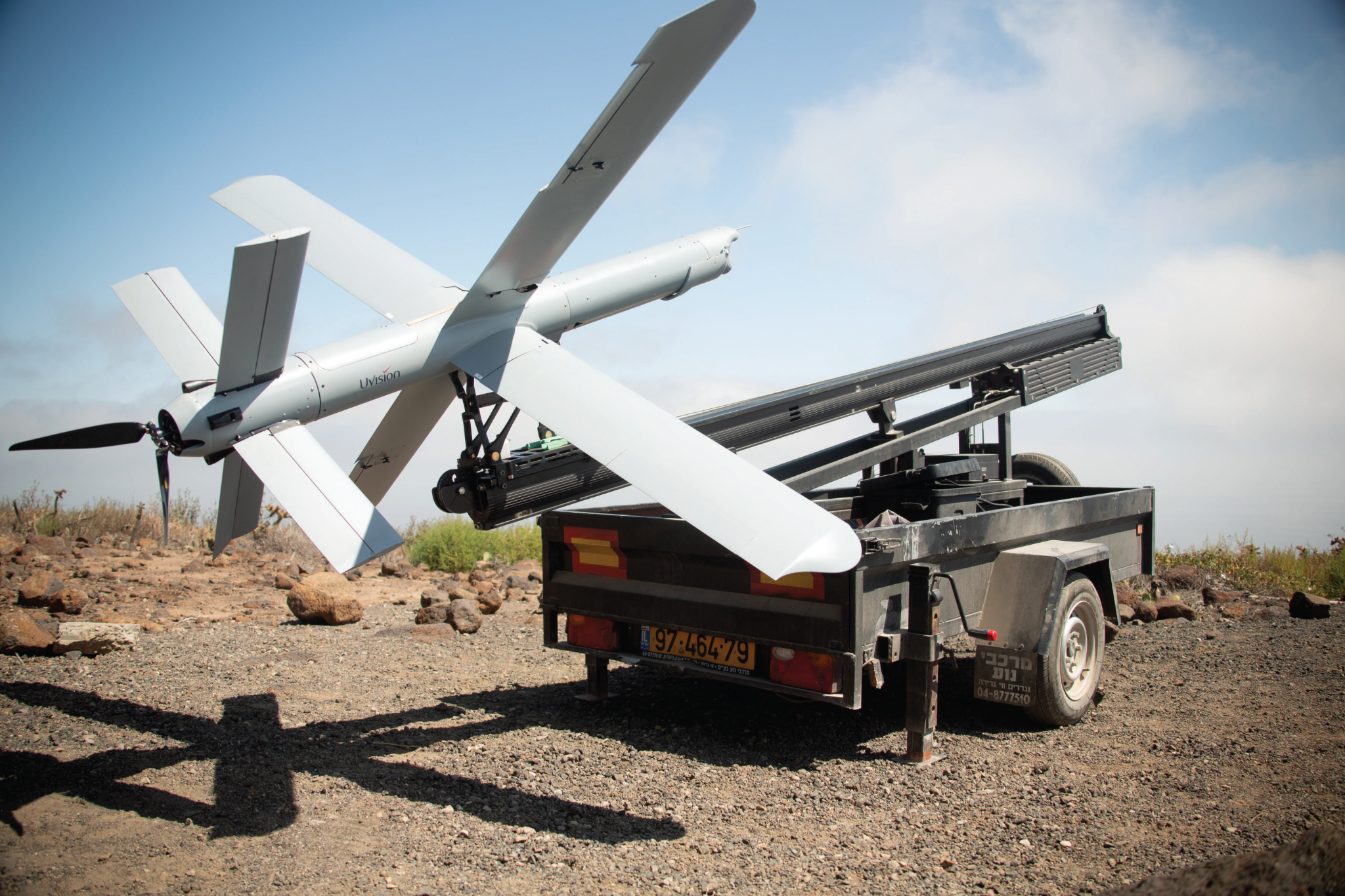Facing a peer competitor
>LtCol Gillett is Combat Engineer Officer who is currently assigned to the Massachusetts Institute of Technology as a CMC Fellow. He was previously assigned to 3d MLG, III MEF as the Commanding Officer of 9th Engineer Support Battalion.
The most pronounced strategic military impact of the 1991 fall of the Soviet Union on the United States was the shift from maritime, air, and space superiority to one of supremacy. Multi-domain supremacy ushered in a period where the United States sat at the apex of a unipolar global system defined by an absence of existential security threats and a lack of comparable nation-state competitors, which led to a focus on crisis response and irregular warfare. In the last decade, the rise of regional challengers in Europe and the Pacific ended America’s “unipolar moment” of unilateral military supremacy.1 Strategically, this shift caused a reassessment of military strategy, organization, and doctrine and reoriented strategic policy from an exclusive focus on expeditionary deterrence to a more traditional balance between expeditionary response and nation-state deterrence. In the case of the Pacific, the United States faces an adversary with the capability to disrupt, deter, and limit the United States’ military effectiveness while offsetting other elements of national power that have been foundational to America’s grand strategy since the fall of the Soviet Union.2
The United States military is in an inter-war period that, like the 1930s pre-World War II era and 1945 to 1949 pre-Cold War era, is focused on developing capabilities necessary to meet global and regional challenges. Modernization has rightly focused on command and control, intelligence, fires, and maneuver in developing a force capable of deterring challenges to the status quo, providing flexible options for crisis response, and, if necessary, defeating an adversary in conflict.3 Though there has been substantive progress in the development of these capabilities, recent calls from Marine Corps and Joint Force senior leadership for modernizing the joint logistics enterprise reflects an acknowledgment that a relative combat power gap exists between strategic ways and means due to an inability to deliver and sustain capability in uncertain or hostile environments.4
Logistics modernization through investments in contested logistics and a global positioning network offers a measurable means to influence and deter peer adversary activities in the region by reinforcing strategic perceptions of credible military capability while demonstrating commitment to the defense of regional allies and partners.5 Logistics forces have the organic means to be a decisive capability in maintaining operational access and generating flexible response options in a competitive campaign against a capable nation-state actor. The artful application of the functions of logistics, fused with other joint capabilities, offers opportunities to conduct operations that can persist, shape, and deter without the escalatory signaling associated with the deployment of kinetic capabilities. The non-escalatory, dual purpose, and soft power nature of logistics in competition offers latent deterrence options that have been undervalued in the era of expeditionary deterrence but are critical to future strategic and operational success because the presumption of uncontested operational access to a crisis area has been directly challenged creating substantive strategic risk.
This article advocates that logistics forces bring credibility to general and immediate deterrence by ensuring that military forces deployed in response to a crisis have the speed, endurance, and capability to influence an adversary’s risk calculations, reinforcing strategic signaling. Additionally, logistics forces provide unique dual-purpose capabilities that reinforce the application of other strategic tools and build relationships with allies and partners in a manner that makes the United States the partner of choice with domestic audiences.
Logistics in Immediate Deterrence
United States’ strategic deterrence failed in March 1950 with Joseph Stalin’s communication to North Korean Kim II Sung, “The Soviet Union has decided also to satisfy fully this request (invasion of South Korea) of yours.”6 This approval ultimately resulted in the North Korean invasion of South Korea on 25 June 1950 and was based on the perception that in the unlikely event that the United States responded to the invasion, there would be insufficient time, based on United States military capability, to stop the North Korean offensive and was thus the invasion was a perceived fait accompli.7
Conversely, the United States achieved strategic success during Operation Vigilant Warrior in 1994 because of a three-year investment in regional forward operating sites and cooperative security locations facilitated by low visibility and persistent deployments of support forces. These investments resulted in the development of mature infrastructure and robust regional stocks that were supported by the appropriate experts to operationalize those capabilities in crisis.8 These factors directly enabled the deployment and in-theater equipping of 4,000 combat troops in two days, with a further 36,000 moving to the region within three days, in response to the movement of two Iraqi Republican Guard Divisions to the Kuwaiti border. The speed of the response, compared to the 30 days for deployment required during the Gulf War, surprised Saddam Hussein and was the “primary source of U.S. deterrent power” in coercing, through signals, Iraqi withdrawal and de-escalation.9
Since 1945, the United States has been strategically involved in 368 international crisis events that met three criteria in the International Crisis Behavior database:
- A threat to one or more basic values;
- An awareness of finite time for response to a value threat, and
- A heightened probability of involvement in military hostilities.10
In 52 cases, the United States overtly deployed conventional military forces with the result of de-escalation or termination of the crisis in 73 percent of cases, escalation of the crisis in 15 percent of cases, and no definitive impact on the crisis in 11 percent of cases.
While speed is relative to the perceived threat and the rate at which a crisis unfolds, time is a finite and decisive resource in crisis response. On average, the speed at which forces were deployed from the initiation of the crisis to the first arrival of forces into the crisis area, using the International Crisis Behavior database, was 35.15 days for crises that resulted in de-escalation. In contrast, the speed of the crisis deployment was 57 days for cases that resulted in escalation.11 These findings, combined with historical case studies, indicate that speed is an unambiguous tool to signal capability and credibility. Furthermore, a critical enabler to facilitate speed is investment in strategic transportation, regional infrastructure, and regional pre-positioning as was demonstrated in the dataset by a mean speed of 48.71 days for deployments to immature theaters as compared with a mean of 14.88 days to a mature theater where personnel, infrastructure, and pre-positioned stocks were available in the crisis region.12 Thus, in all 52 cases, previous investments in transportation, pre-positioning, and forward positioning provided the foundation that enabled or inhibited the composition, speed, and influenced the credibility of crisis deployments.13
A robust sustainment network signals credible capability to an adversary and credible commitment to allies and partners. A crisis scenario in the Western Pacific would likely require forward forces to disperse regionally to act as the stand-in force until reinforced through global deployments.14 Based on current forces in the area, forward-positioned ground forces will require initial transportation of between 27,000 and 36,000 tons of personnel, equipment, and supplies regionally.15 Following dispersal, these forces would require between 300 and 600 tons of fuel, water, food, and ammunition daily for ground forces, with an additional 2,500 to 3,500 tons, mainly fuel and ammunition, required daily for aviation formations.16 The additional strain placed on strategic and operational transportation assets, moving forces, equipment, and supplies to reinforce the region magnifies the significance of logistical requirements. A significant crisis deployment from the continental United States, using five divisions and ten air wings as a baseline, would require the movement of roughly one million tons and would require, given optimal conditions, one month or more to complete.17
Logistics investments in general deterrence proportionally reduce, but do not eliminate, the strain on strategic and operational transportation systems in crisis through pre-positioning and forward positioning. Infrastructure, supply, equipment, and sustainment investments in volatile regions allow for the rapid deployment of credible forces that arrive with the necessary support to endure and deter immediately, increasing strategic credibility in crisis. Additionally, the proportional reduction of strategic transportation requirements transitions deployments in mature regions from expeditionary response to conventional strategic response where the threat and an adversary’s access to maritime, air, and space domains is at risk, improving the deterrence credibility and capability and reducing the probability of escalation.
Perceptions of Military Credibility and Capability
A lack of investment in sustainment creates a strategic and operational capability and credibility gap in the Western Pacific, undermining deterrence. A 2023 study from the Center for Strategic and International Studies reveals a series of salient tensions in response to a Taiwan scenario that presents significant risks in escalation and conflict. The two most significant findings related to logistics were the United States must respond rapidly and with its full capabilities to prevent Taiwan from falling, and movement of the intra-theater lift of forces, equipment, and supplies became untenable based on China’s anti-access capabilities early in the conflict, resulting in an abrupt reduction in the capability of combat forces.18 Thus, speed and endurance are two significant factors in the credibility of deterrence and effectiveness in combat against a peer adversary and are qualities that are directly shaped by logistics posture.
Investment in logistics modernization and capabilities in strategically contested regions offers a means to provide latent deterrence through the placement of multipurpose capabilities, which can be overt or concealed, and enhance capability across the spectrum of conflict without the impediment of being explicitly threatening or escalatory.19 The Joint Force has already begun this process through investments such as the Pacific Deterrence Initiative allotment of three and a half billion dollars into the development of main operating bases and the one-hundred-million-dollar investment in Enhanced Defense Cooperation Agreement sites in the Philippines.20 However, these investments provide a linear capability that does not align with the envisioned network and require operational and tactical investments to create a multi-tiered strategic and operational mosaic.21
Forward positioning of logistics forces and investments in a distributed network offers a means to reduce the initial burden on transportation networks during crisis deployments, increasing the speed of the deployment and thus bringing credibility to strategic signals. While agreements with partners and allies will not afford unfettered access, investments reduce transportation requirements, generate flexibility, and provide endurance that is not solely dependent on strategic and operational transportation capabilities.
Support to Allies and Partners
The Marine Corps stand-in-force concept emphasizes the necessity for a persistent presence in a contested area to disrupt an adversary in competition and form the “leading edge of a maritime defense in depth” in crisis and conflict.22 Access to contested areas is the core of the concept, with the most significant assumption being that political elites and populations of allied and partner nations will permit access to sovereign territories. Historically, the success or failure of basing agreements with allies depends on available resources, shared threat perceptions, and the cost to political leaders by the domestic audiences.23 Tactical formations offer a means to provide access by leveraging capabilities that do not present a similar threat perception, compared to traditional combat formations, to domestic and international audiences, enabling persistent access to locations inaccessible to other conventional formations.
Domestic audiences will fundamentally view infrastructure construction and repair, medical and dental services, water production and distribution, transportation, and other capabilities differently than combat formations and thus offer alternative and multi-functional solutions in developing agreements. For example, the April 2023 United States-Philippine bilateral announcement of four additional Enhanced Cooperation Agreement sites drew domestic condemnation, leading to statements by senior Philippine officials that the bases would be used primarily for logistics support.24 While a review of 1,430 media reports from February 2023 to August 2023 related to United States-Philippine agreements and regional geopolitical conditions reveals a balanced domestic debate, statements and reporting by leaders indicate that capabilities that are directly applicable to such military operations as humanitarian assistance and natural disaster response stimulates an alternative narrative and represent an opportunity to align operational and strategic ways, means, and ends.
Implications to the Logistics Enterprise
Campaigning. Nested with stand-in force and Joint Force requirements, logistics forces link campaign phases by providing a persistent presence that builds, maintains, and supports strategic and operational investments. Construction of infrastructure by engineers, embedding medical personnel in host nation hospitals, and maintaining stocks and equipment intended to provide responsiveness to natural and man-made disasters all represent activities that facilitate speed and capability in crisis response, bring credibly to strategic signals, and reinforce relationships with allies and partners across a range of time horizons.
General Support in Competition. Establishing a global and regional network to support operations in competition, crisis, and conflict is beyond the organic capabilities of combat formations. In order to build a regional capability that is adaptive, nested, and credible, logistics must evolve from a traditional focus of providing direct support for operations, investments, and activities to one of general support focused on persistent forward presence and increasing regional capacity. The logistics enterprise has a responsibility for the maintenance, development, and operation of main operating bases as key nodes; however, the development and operation of forward operating sites and cooperative security locations will play a critical role in evolving the logistics network from a linear and inflexible network to one that is multi-dimensional, resilient, and diverse. This requires an evolution in logistics formation’s doctrinal employment in competition.
Prioritization of Effectiveness over Efficiency. Effective deterrence requires a degree of risk in the allocation of finite resources. Developing a logistics network requires investment in nodes that may never be employed, where partner policies and strategic priorities change, resulting in expansion or reduction in access, or where elements of the network are out of position in the transition from general to immediate deterrence. However, the most significant risk to the credibility and capability of the joint force is a lack of investment, leading to strategic insolvency. Tactical and operational logistics formations are crucial in limiting risk by shaping through sustained investment while providing strategic flexibility in a crisis.
Conclusion
The employment of logistics forces directly imparts credibility and capability to strategic deterrence through both latent and active capabilities. Logistics and sustainment are essential to deterrence, crisis response, and the effectiveness of operational command and control, fires, intelligence, and maneuver capabilities. Fundamentally, logistics formations bring credibility to strategic signaling in general deterrence and enable tactical and operational effectiveness in crisis and conflict only through investment in competition.
Joint logistics formations’ primary task in the Pacific must be establishing, developing, and sustaining a multi-nodal, distributed network that is ruthlessly opportunistic in the application of engineering, maintenance, supply, transportation, medical, and other logistics functions. Even in competition, opportunities will be fleeting, and a force with the dexterity, creativity, and resources to exploit opportunities will be the force with the initiative and credibility in competition.
Logistics forces offer an optimal and uniquely postured capacity to facilitate access through organic capabilities, enhance perceptions of America’s commitment to allies and partners, challenge the adversary’s core deterrence calculus, and build credible capability into contingencies by enabling crisis deployment speed and endurance. Strategic transportation is finite, and every cubic foot of food, water, building materials, maintenance parts, and other supplies, forward-positioned or pre-positioned, reduces competition in the movement and sustainment of decisive capabilities in crisis and combat.
Notes
1. Barry R. Posen, “From Unipolarity to Multipolarity: Transition in Sight?” in International Relations Theory and the Consequences of Unipolarity, (Cambridge: Cambridge University Press, 2011).
2. The White House, National Security Strategy, (Washington, DC: 2022).
3. Headquarters Marine Corps, Tentative Manual for Expeditionary Advanced Base Operations, (Washington, DC: 2022).
4. Staff, “A Conversation with General David Berger, Washington, DC,” Brookings Institute, May 23, 2023, https://www.brookings.edu/wp-content/uploads/2023/06/fp_20230523_usmc_berger_transcript.pdf; Richard R. Burgess, “USMC Calls for GPN,” Seapower, February 23, 2023, https://seapowermagazine.org/usmc-calls-for-gpn; and Jen Judson, “U.S. Army Has a ‘Gigantic Problem’ with Logistics in the Indo-Pacific,” Defense News, March 29, 2023, https://www.defensenews.com/land/2023/03/29/us-army-has-a-gigantic-problem-with-logistics-in-the-indo-pacific.
5. Kristen Gunness, Bryan Frederick, Timothy R. Heath, Emily Ellinger, Christian Curriden, Nathan Chandler, Bonny Lin, James Benkowski, Bryan Rooney, Cortez A. Cooper III, Cristina L. Garafola, Paul Orner, Karl P. Mueller, Jeffrey W. Hornung, and Erik E. Mueller, Anticipating Chinese Reactions to U.S. Posture Enhancements, (Santa Monica: RAND Corporation, 2022), https://www.rand.org/pubs/research_reports/RRA1581-1.html.
6. Allan Reed Millet, The War for Korea, 1950–1951: They Came from the North (Lawrence: University Press of Kansas, 2010).
7. Jonathan Mercer, “Emotion and Strategy in the Korean War,” International Organization 67, No. 2 (2013).
8. Seth G. Jones and Seamus P. Daniels, “U.S. Defense Posture in the Middle East,” CSIS, 2022, https://csis-website-prod.s3.amazonaws.com/s3fs-public/publication/220519_Jones_USDefensePosture_MiddleEast_0.pdf?VersionId=60gG7N1_4FxFA6CNgJKAbr24zmsKXhwx.
9. W. Eric Herr, “Operational Vigilant Warrior: Conventional Deterrence Theory, Doctrine, and Practice,” (thesis, School of Advanced Air Studies, 1996).
10. Michael Brecher, Jonathan Wilkenfeld, Kyle Beardsley, Patrick James, and David Quinn, “International Crisis Behavior Data Codebook, Version 15,” ICB Project, 2023, http://sites.duke.edu/icbdata/data-collections.
11. Ibid.
12. Ibid.
13. Ibid.
14. Mark F. Cancian, Matthew Cancian, and Eric Heginbotham, “The First Battle of the Next War: Wargaming a Chinese Invasion of Taiwan,” CSIS International Security Program, 2023, https://csis-website-prod.s3.amazonaws.com/s3fs-public/publication/230109_Cancian_FirstBattle_NextWar.pdf?VersionId=WdEUwJYWIySMPIr3ivhFolxC_gZQuSOQ.
15. Gordon I. Button, J. Riposo, I. Blickstein, and P.A. Wilson, Warfighting and Logistic Support of Joint Forces from the Joint Sea Base (Santa Monica: RAND, 2007).
16. Ibid.
17. Michael O’Hanlon, The Science of War: Defense Budgeting, Military Technology, Logistics, and Combat Outcomes (New Jersey: Princeton University Press, 2009).
18. “The First Battle of the Next War.”
19. Kristen Gunness, Bryan Frederick, Timothy R. Heath, Emily Ellinger, Christian Curriden, Nathan Chandler, Bonny Lin, James Benkowski, Bryan Rooney, Cortez A. Cooper III, Cristina L. Garafola, Paul Orner, Karl P. Mueller, Jeffrey W. Hornung, and Erik E. Mueller, Anticipating Chinese Reactions to U.S. Posture Enhancements (Santa Monica, CA: RAND Corporation, 2022), https://www.rand.org/pubs/research_reports/RRA1581-1.html. Also available in print form.
20. Department of Defense, “Pacific Deterrence Initiative,” OUSD, March 3, 2023, https://comptroller.defense.gov/Portals/45/Documents/defbudget/FY2024/FY2024_Pacific_Deterrence_Initiative.pdf; and Staff, “Fact Sheet: U.S.- Philippines 2+2 Ministerial Dialogue,” Department of Defense, April 11, 2023, https://www.defense.gov/News/Releases/Release/Article/3359459/fact-sheet-us-philippines-22-ministerial-dialogue.
21. Headquarters Marine Corps, Installations and Logistics 2030, (Washington, DC: 2023).
22. Headquarters Marine Corps, A Concept for Stand-in Forces, (Washington, DC: 2021).
23. Bryan Frederick, Stephen Watts, Matthew Lane, Abby Doll, Ashley L. Rhoades, and Meagan L. Smith, Understanding the Deterrent Impact of U.S. Overseas Forces, (Santa Monica: RAND Corporation, 2020).
24. Staff, “Marcos: PH Won’t Allow Use of EDCA Sites for Offensive Operations,” CNN, April 10, 2023, https://www.cnnphilippines.com/news/2023/4/10/marcos-edca-sites-not-for-offensive-operations.html.


